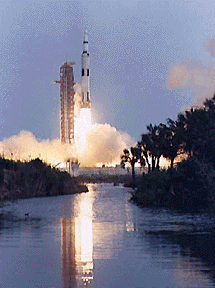Picture of Apollo 13 launch
NASA
Apollo 13
After the Apollo 1 fire, NASA suffered its second failure in the Apollo program with their thirteenth space mission. Apollo 13 was launched on Apr. 11, 1970, carrying astronauts James Lovell, John Swigert, and Fred Haise on board. It continued on a journey to the Moon, where it planned to complete the third manned lunar landing.
However, just two days into the mission, a loud bang was heard, caused by the explosion of an oxygen tank. The Apollo 13 crew soon learned that their power supply was dangerously low, as well as other supplies necessary for maintaining life support. Stranded in space, 200,000 miles from Earth and heading toward the Moon, the astronauts realized that their lunar landing would be impossible, and even making it back to Earth alive would be a miracle.
In a classic display of resourcefulness, NASA engineers searched for ways to utilize the supplies and equipment of the Apollo 13 lunar module, which had remained unharmed in the explosion. They cleverly figured out ways to use its engine and oxygen reserves, and safely returned the Apollo spacecraft to Earth in four days. The Apollo 13 mission is classified as a failure, but with the courageous rescue of its three astronauts avoids being considered a disaster.
You might also be interested in:
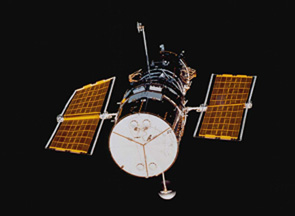
The Hubble Space Telescope (HST) is really neat! It was first launched in 1990, but scientists started building it in the 1970's! We have found all kinds of objects like stars, nebulae and galaxies. The
...more
Apollo 11 was the first mission that landed a person on the moon. On July 16, 1969, the U. S. rocket Saturn 5 was launched carrying the lunar landing module Eagle. The Eagle was released and it reached
...more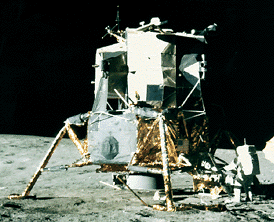
Apollo 12 was launched on Nov. 14, 1969 and arrived at the Moon three days later. Astronauts Charles Conrad and Alan Bean descended to its surface, while Richard Gordon remained in lunar orbit aboard the
...more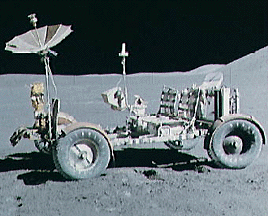
Apollo 15 marked the start of a new series of missions from the Apollo space program, each capable of exploring more lunar terrain than ever before. Launched on July 26, 1971, Apollo 15 reached the Moon
...more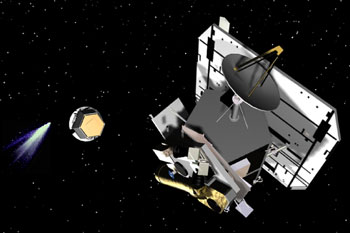
NASA chose Deep Impact to be part of a special series called the Discovery Program. This program is for cheap, scientific projects. In May 2001, NASA said it was ok to start with mission development for
...more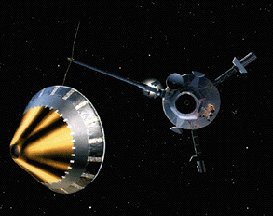
Galileo was a spacecraft that orbited Jupiter for eight years. It made many discoveries about Jupiter and its moons. Galileo was launched in 1989, and reached Jupiter in 1995. The spacecraft had two parts.
...more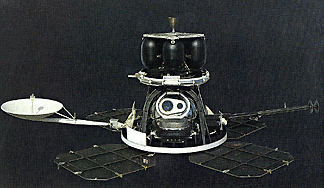
During 1966 through 1967, five Lunar Orbiter spacecrafts were launched, with the purpose of mapping the Moon's surface in preparation for the Apollo and Surveyor landings. All five missions were successful,
...more
